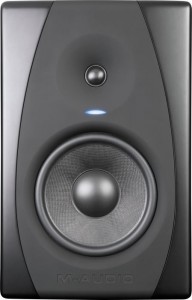Studio Monitor Burn In: Fact or Fiction?
One of the things I love about recording is the passion that other recording enthusiasts have for it. If you’ve frequented any of the popular recording forums (TapeOp, Gearslutz, Homerecording, etc.), you’ll find some very colorful discussions about what gear is best and how best to use it. Occasionally, I’ll discover that there’s a whole mythology that has developed around a certain recording technique (e.g., the “Recorderman” overhead mic placement on drums) or a certain “best practice” that people either swear by, or swear at. Such is the case with whether or not to “burn-in” new studio monitor speakers.
I’ve been recording in one capacity or another for 20 years, and I had never heard of “burning in” studio monitors. However, in the process of researching some new monitor speakers to buy for the studio, I hit upon this idea and was intrigued. The general recommendation from the “burn in” camp goes something like this:
When you first get a new set of monitors, you should play either pink noise or some CD’s (some say with varying dynamics, lots of bass, lots of transients, etc.) continuously through them for 3 or 4 days. This effectively “burns-in” the electronic components and breaks in the physical drivers.
The idea is that after the initial burn-in, the speakers will perform more consistently for the duration of their life, and possibly be less prone to failure. If you don’t burn them in, their performance may be somewhat inconsistent for a while until they get broken in, and therefore it would be unwise to use them for any mission-critical mixing until after they’re broken in. By burning them in, you effectively bypass that introductory period when your monitors aren’t trustworthy.
The “don’t burn-in” camp usually counters with something like this:
Modern speakers are made using materials that typically don’t change much over time. They’re often made from very rigid materials (such as woofers made of Kevlar), that are chosen in part because they are highly resistant to deformation, and therefore, the idea of studio monitor “burn-in” is simply snake oil, and won’t make a bit of difference.
Feeling less than satisfied after reading up on this topic on several forums, I decided to e-mail the sales rep at the retailer where I bought my new monitors (a pair of M Audio CX8’s). At first, he replied that he figured any speaker would benefit from a burn-in, but that he had contacted his rep with the manufacturer, and would let me know what they said. He later forwarded an e-mail from the manufacturer’s rep who said that they offer no specifici recommendations as to whether or not to burn in their monitors. I also got a reply on the manufacturer’s forum from a moderator who echoed the same sentiment.
So that specific manufacturer offers no specific recommendation that their monitors be burned in. However, some other notable manufacturers do. Adam Audio recommends that their monitors be burned in for up to a week. This is according to the Adam FAQ on their website:
Loudspeakers include movable parts. Therefore, they need a certain ‘burn-in time’ for a full excursion and adaption of these parts. After this burn-in time, the speakers reach their full acoustic potential. To break-in your speakers, it is advisable to feed them with music signals of a broad frequency spectrum and different volumes for a certain period of time: Up to one week for a ‘normal’ burn-in. Up to four weeks for a reliable long-term consistency. However, no responsibility can be taken for the correctness of this information since it always depends on both frequency and sound pressure level of the speakers usage. Furthermore, the real time a speaker needs to burn in is, to some extent, always due to the specific speaker itself.
Other high-end monitor brands, such as Focal, also recommend a burn-in. Some Focal retailers even offer to burn them in before shipping them out to you. Adam and Focal are no slouches when it comes to the manufacture of studio monitors, so I can’t help but think that there may be some real benefit.
In the end, does it help to burn in your monitors? Maybe. But even if it doesn’t, it certainly shouldn’t hurt. In fact, if nothing else, a good burn-in for a few days might reveal any manufacturing defects that might otherwise cause a failure later on down the road, after the warranty period has expired. And without a doubt, any such failure would probably occur right in the middle of an important tracking or mixing session.
So my advice is this: go ahead and burn them in. I decided to burn mine in for a few days by just putting a CD on loop and turning the speakers up to about 85 db. Will it make a difference? I’ll probably never know. But I’ve had fun learning about yet another controversial topic in this crazy domain that we call “recording audio”.
Shop for studio monitors at ZZounds.com:
 November 4, 2013
|
Posted by Jon (admin)
November 4, 2013
|
Posted by Jon (admin)


 Categories:
Categories:  Tags:
Tags: 